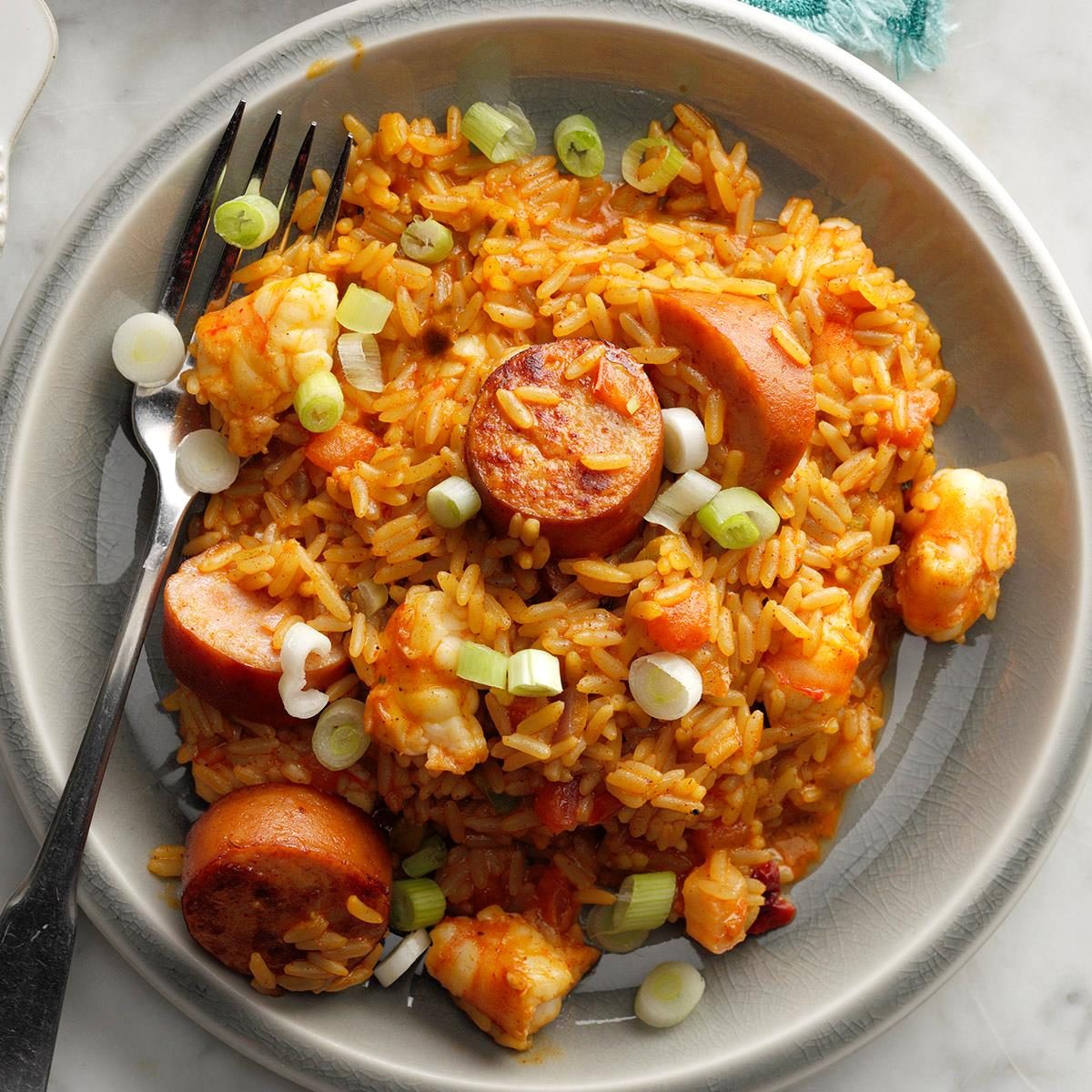If you’re looking for a meal that’s bold, hearty, and steeped in tradition, Jambalaya is the answer. This classic dish from Louisiana combines rice with a flavorful mix of meat, seafood, and vegetables, all simmered in aromatic spices. Jambalaya is a staple of Southern cuisine, especially in Creole and Cajun kitchens, and it has become a comfort food favorite far beyond the American South.

In this article, we’ll explore the origins of Jambalaya, its different types, key ingredients, a step-by-step recipe, and tips to perfect this vibrant dish at home.
A Brief History of Jambalaya
Jambalaya’s history is as rich as its taste. It was born in Louisiana, influenced by the many cultures that settled there — Spanish, French, West African, and Caribbean, among others.
Spanish Roots
The recipe is similar to Spanish paella. The Spanish colonizers tried to make paella using local ingredients but were forced to substitute tomatoes for saffron, which resulted in the Creole version.
Creole vs. Cajun Jambalaya
There are two primary forms of Jambalaya:
Creole (Red) Jambalaya – New Orleans and contains tomatoes.
Cajun (Brown) Jambalaya – Rural Louisiana and prepared without tomatoes. It is colored by browning the meat and vegetables.
Both styles utilize the “holy trinity” of vegetables — onion, bell pepper, and celery — as the flavor foundation.
Main Ingredients in Jambalaya
Every Jambalaya recipe differs, but the main ingredients are:
1. Protein
Smoked sausage (typically andouille)
Chicken thighs or breast
Shrimp, crawfish, or other seafood
2. Vegetables
Onion
Bell pepper
Celery
Garlic
Tomatoes (in Creole Jambalaya)
3. Rice
White long-grain rice is the traditional choice. It is cooked together with the other ingredients in the pot, soaking up all the spices and taste.
4. Spices
Paprika
Cayenne
Thyme
Oregano
Bay leaves
Cajun or Creole seasoning blend
Classic Jambalaya Recipe (Serves 4–6)
Ingredients:
1 tbsp olive oil
1 lb andouille sausage, sliced
1 lb chicken breast or thighs, cubed
1 medium onion, diced
1 green bell pepper, diced
2 celery stalks, diced
3 garlic cloves, minced
1 can (14 oz) diced tomatoes (for Creole version)
1 cup long-grain rice
2½ cups chicken broth
1 tsp paprika
½ tsp cayenne pepper (optional)
1 tsp dried thyme
1 bay leaf
Salt and pepper to taste
½ lb shrimp (peeled and deveined, optional)
Chopped parsley and green onions (for garnish)
Instructions:
Brown the meat: Heat oil in a large pot over medium heat. Add sausage and cook until browned. Remove and set aside. Add chicken and cook until lightly browned.
Sauté vegetables: Add onion, bell pepper, celery, and garlic. Sauté until tender.
Add tomatoes and seasoning: Stir in diced tomatoes (if using), paprika, cayenne, thyme, and bay leaf. Season with salt and pepper.
Add rice and broth: Add sausage back to pot. Stir in rice and add chicken broth. Bring to a boil.
Simmer: Lower heat to low, cover, and simmer for 20–25 minutes or until the rice is tender and most of the liquid has been absorbed.
Add shrimp (optional): If adding shrimp, add it in the last 5 minutes of cooking until pink and cooked through.
Garnish and serve: Discard the bay leaf. Garnish with chopped parsley and green onions. Serve hot.
Tips for the Perfect Jambalaya
Use authentic andouille sausage for that smoky kick.
Brown the meats thoroughly to add rich flavor to the dish.
Let the rice cook undisturbed — don’t stir after it begins simmering, or it’ll turn mushy.
Add seafood toward the end so it doesn’t overcook.
Spice it up to taste: Balance heat with cayenne and hot sauce.
Jambalaya Variations
Vegetarian Jambalaya: Try plant-based sausage and add a lot of vegetables such as zucchini, mushrooms, and okra.
One-pot Instant Pot Jambalaya: A quicker rendition using a pressure cooker.
Jambalaya Pasta: Substitute rice with penne pasta for a playful spin.
Why Jambalaya Is So Popular
It’s a one-pot meal: Protein, vegetables, and carbs all together in one dish.
Serves a crowd: Ideal for parties, tailgates, and family meals.
Budget-friendly: Utilizes cheap ingredients and goes a long way.
Flavor explosion: Spicy, smoky, savory, and filling in each bite.
Conclusion
Jambalaya is not just a dish — it’s an experience, a party of big flavors, and an emblem of hospitality Southern style. With or without tomatoes, Creole or deeper, smokier Cajun, Jambalaya never fails.
So the next time you’d like to wow your guests or just need something warm and comforting, cook up a pot of this tasty one-pot treat. With a little prep work, you’ll have a people-pleasing dish that has brought folks together in Louisiana for generations.

Leave a Reply